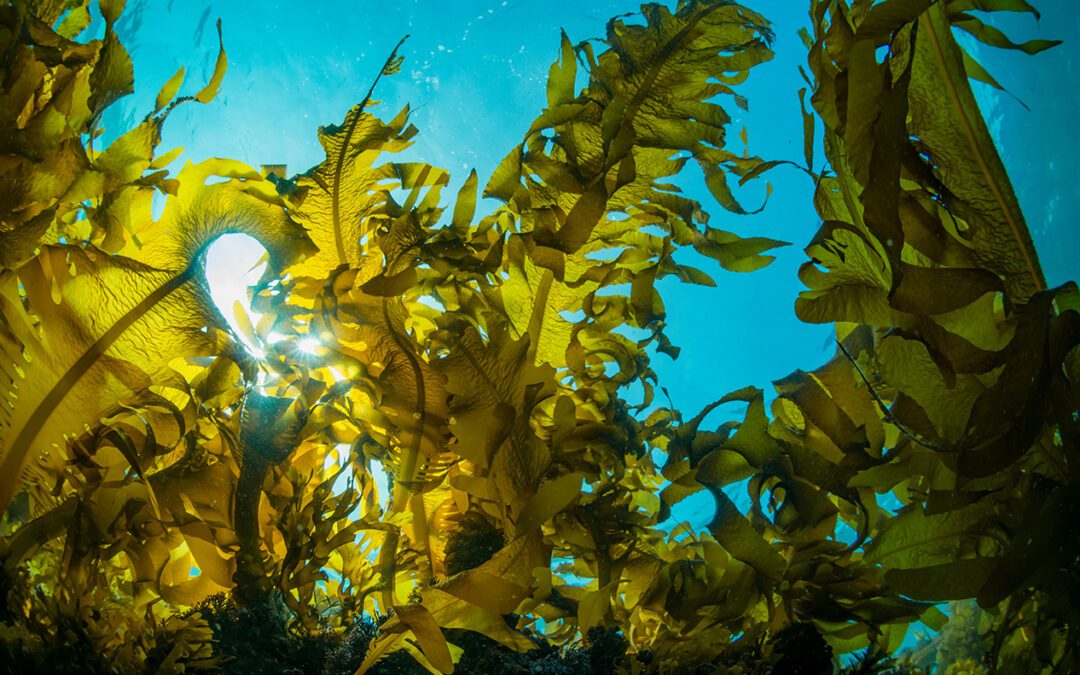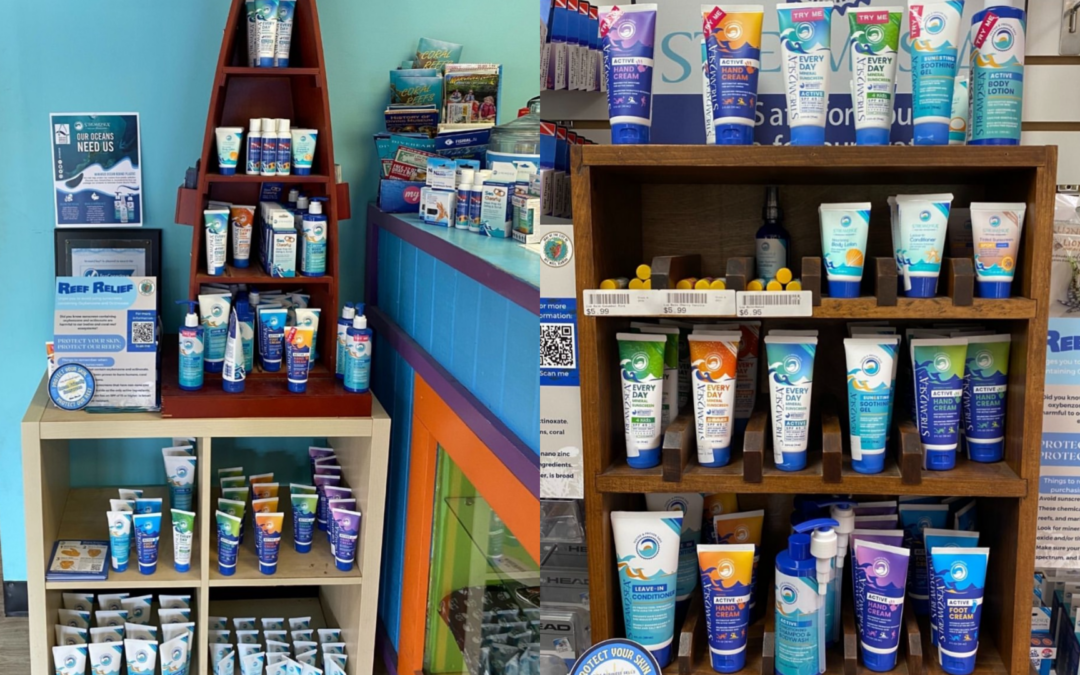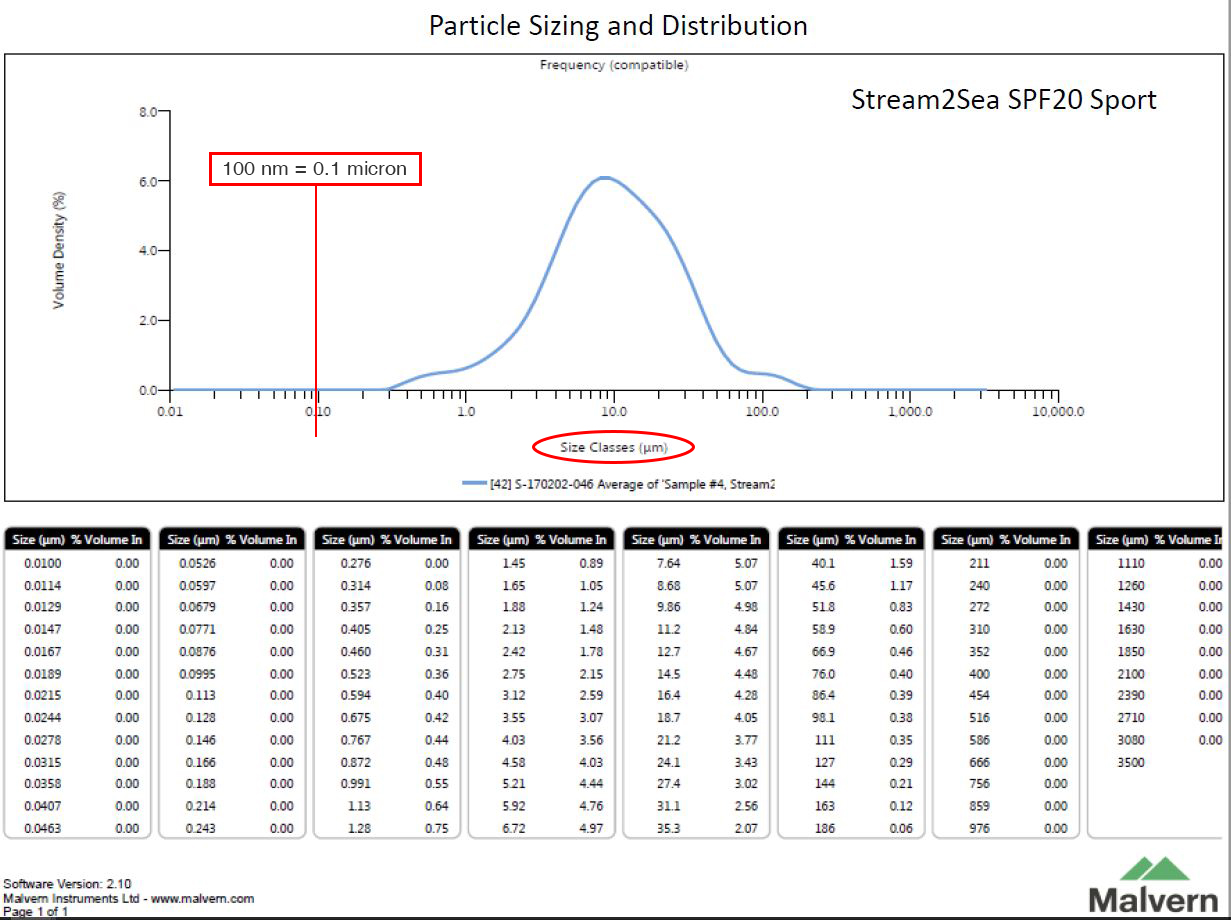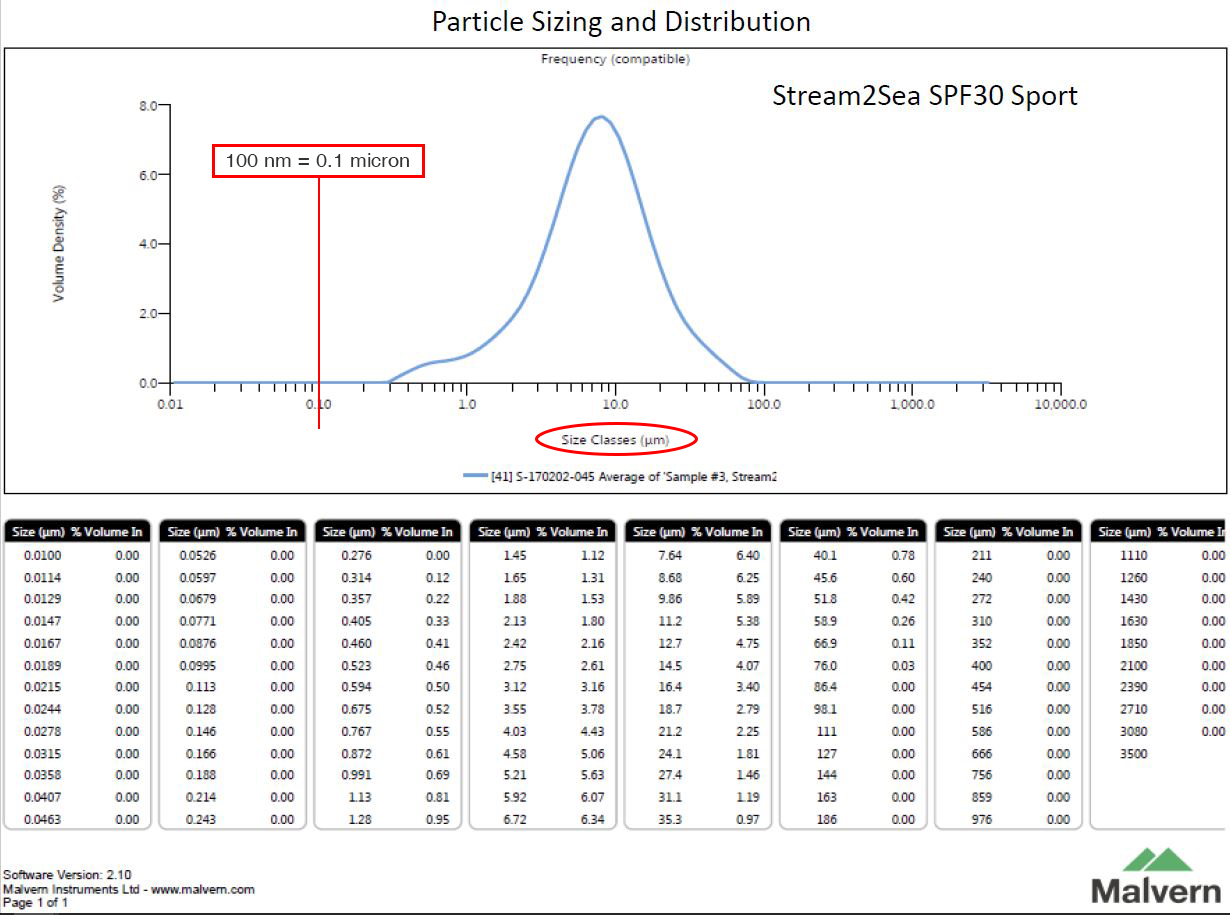Nanoparticles Dangerous for People, Oceans
Non-Nano Titanium Tested Safe Even for Vulnerable Coral Larva

On Friday, a customer sent us a copy of an article questioning the safety of titanium dioxide, the active ingredient in all Stream2Sea reef-safe sunscreens published in the peer-review journal Radiation and Oncology. The science nerds on our team jumped on it immediately, expecting to hear from thousands of other customers. We knew we needed to review the issues and “translate” the science to readable English. Turns out the story was originally published in 2011 – and focuses on nanoparticles of titanium dioxide, which we have never, ever even considered using. We’d reviewed and considered previous work showing that it, and other nanoparticles, poses a clear and present danger to people. Nano-titanium and nano-zinc particles may be absorbed by the human body and the aquatic environment. They cause oxidative stress (think free radicals) that may lead to cell damage, genotoxic effects, inflammatory responses and changes in cell structure. We did learn one very important fact buried in the back of the report: “Current legislation does not require labeling whether the products contain nano-sized titanium dioxide or zinc oxide.”
Stream2Sea biodegradable and reef safe mineral sunscreens are independently verified to contain only NON-NANO particles of titanium dioxide. The X-Axis on these charts are in microns. 100 nanometers equals 0.1 micron. Both plots show nothing below 100 nanometers or 0.1 microns.
Want to learn more? Check out some of our previous posts!

2024 Year in Review
January: Our long-awaited Water Sport Ear Rinse, manufactured in our FDA-registered factory, hits the market with applause from swimmers and divers who appreciate our all-natural solution to maintaining ear health. February: We begin shipping our all-natural SPF 40...

Hurricane Helene Relief Efforts: Together, We Can Help Rebuild Our Communities
In the wake of Hurricane Helene, our hearts are with the families and communities across Florida and neighbouring states that have been devastated by the storm’s 500-mile path of destruction. With over 100 lives lost and thousands displaced, the effects of this...

Simple Tips for a Sustainable Skincare Routine with Stream2Sea
The new year is a perfect time to rethink your skincare habits and make them more eco-conscious! Small changes can have a big impact on both you and the planet. Here’s how to get started: Seaweed and Sunlight 1. Choose Non-Toxic Ingredients Not all “natural” or...

Support Your Local Business for Small Business Saturday
Today, we want to say a big thank you for supporting a small business with a big mission!

